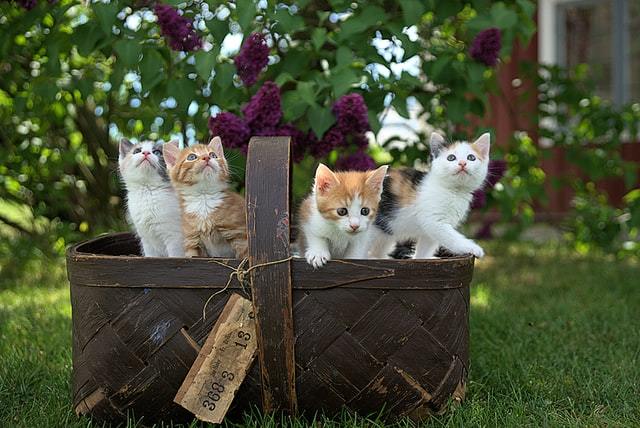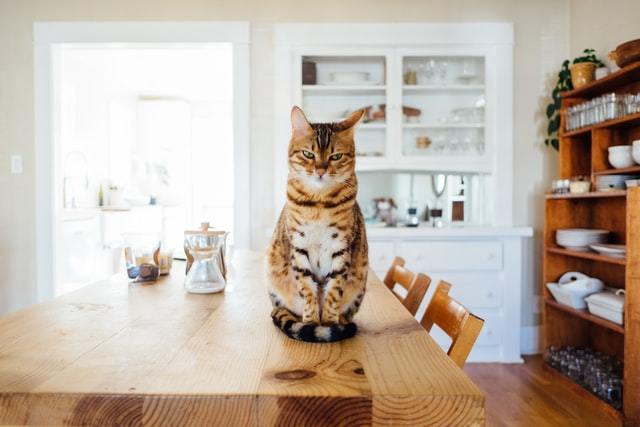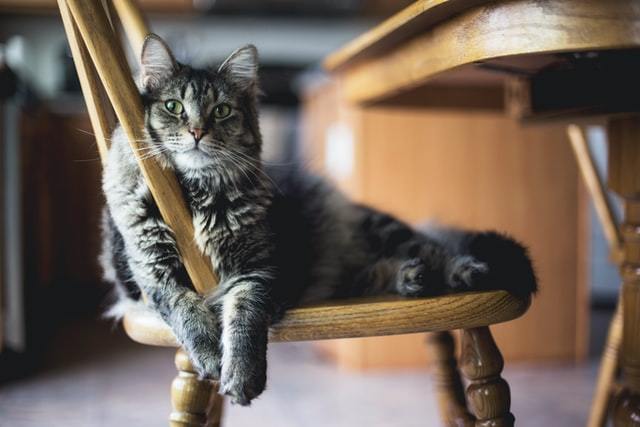Dental care for cats is an often overlooked area. Most owners want to do the best for their kitty. We will buy them the best cat food. We’ll groom them every day. We make sure they’re up to date with their vaccines. However, only a small number of cat owners will brush their teeth each day.
Cat tooth care is not as high on the agenda as it should be. A large number of adult cats will suffer with some degree of dental disease. One estimate suggests a staggering 85% of those aged three and over are affected. So, even if you think your cat’s teeth are in good health, it’s still a good idea to read on and educate yourself about feline dental disease.
How to Brush Your Cat's Teeth
Tooth brushing reduces bacterial load and plaque levels. It is, by a long shot, the most effective way to bolster dental health. Other interventions such as mouthwashes and prescription diets do not compare, but are important in their own right.
Cats are not naturally accepting of having their teeth brushed. It is sensible to start the process from a young age. This can help ensure they tolerate the process.
Read our step-by-step guide, where we discuss how to start, what tools are needed and how it is important to take things slowly and go at your kitty’s pace. Alternatives to tooth brushing are also discussed, as we understand many cats will never tolerate having a tooth brush in (or even near!) their mouth.
Signs Your Cat May Have Dental Pain
We’ve published a comprehensive article on the seven most obvious signs of dental pain. It is not always obvious when your cat is in discomfort. Indeed, many owners will tell me their cat cannot be in pain ‘as they are still eating’. This is a myth that needs to be busted quickly. Even those in extreme pain will try their best to continue eating; the alternative would mean a slow and painful death.
The importance of monitoring your cat as they eat is highlighted. This way, you can pick up on less obvious signs such as altered chewing and food dropping. You should also try to get close to their mouth, checking for bad breath and assessing for wet fur that is covered in drool.
As cats are such experts at hiding signs of disease, many will have advanced dental issues before they are detected. Remember, the issue is sometimes below gum level and not easily visible without x-rays.

Diseases
There are a number of significant dental diseases that a feline can experience. These include periodontal disease, stomatitis, gingivitis and Feline Oral Resorptive Lesions (FORLs). Delve into each article to learn about these oral diseases in-depth.
Periodontal Disease
Periodontal disease is gum disease. Signs can vary but may include a reduced willingness to eat and bad breath. Causes are not always straightforward, and diet, genetics and infections can all play a role.
The course of periodontal disease is as follows: Bacteria forms a plaque film on a tooth that has food on its surface. The tartar becomes calculus; a thick and visible layer of yellow or brown build-up. Gums become inflamed and may be red, swollen and can even bleed. As the connection breaks down, teeth will become loose.
Cats Stomatitis
Those with stomatitis can experience significant chronic pain. Gums will be swollen and red and cats can show a range of symptoms. These can include a refusal to eat hard kibble, matted fur, hiding away and weight loss.
Stomatitis is generally linked to pre-existing dental disease. However, for some, this is not the case. Stomatitis can be a genetic issue and can also be linked to auto-immune disease and certain infections.
Gums may look so abnormal that the vet will biopsy them to rule out cancer. Bacterial swabs and oral x-rays may also be taken, ensuring we have the right diagnosis.
Very mild stomatitis can sometimes be reversed with at-home dental cleaning. However, most cats will require medical intervention. Many will need to have their teeth extracted. This sounds extreme but is an important and effective therapy which improves quality of life.
Gingivitis In Cats
We can generally prevent gingivitis with good oral care. In some cases though, gingivitis will occur alongside other diseases such as stomatitis and FORLs. In these cats, it is much less easy to avoid.
We know that certain breeds are more prone to gingivitis and that those with infections such as Calicivirus and FIV are more likely to develop gum inflammation as they age. In young cats, gingivitis commonly occurs at the site where deciduous teeth have failed to fall out when they should.
Tooth brushing, prescription diets and keeping your cat up to date with their vaccines are all good ways to prevent gingivitis.
Feline Resorptive Lesions
Feline Oral Resorptive Lesions (FORLs) are more common than people realise. The average owner will not have heard of them. There are three types of lesions and the vet will want to decipher which is affecting your cat. This is done by examining the tooth and taking x-rays. Treatment consists of dental extraction. This is the only way to stop the severe pain associated with these lesions.
The cause of FORLs is uncertain but it is believed to be linked to periodontal disease, genetics and diet. We may notice bright red overgrowths of gum on the teeth. We should also pick up on signs of oral pain such as drooling and pawing at the mouth.
Signs Your Kitten Is Teething
Not every kitten is badly affected by teething but some find it quite uncomfortable. You may notice that your kitty has bad breath and is drooling. If you’re very lucky, you might even find a milk tooth on the ground! Teething occurs when a kitten is three to six months old.
It can help your cat if you provide appropriate teething toys and soft food. Have extra patience with them as they may be more inclined to chew on things that they shouldn’t. Though you may have the best intentions, be sure not to brush your kitten’s teeth while they’re actively teething. This would cause them to associate tooth brushing with pain, which is undesirable.
Tooth Removal and Care
A large number of cats will have to have a tooth or two removed during their lifetime. For most, it will be a straightforward procedure and they will be home the same evening. Cats do require a general anaesthetic; this is non-negotiable!
Vets will only advise teeth are removed when it is necessary. This may be due to e.g. advanced periodontal disease or FORLs. Ideally, your cat will have full mouth x-rays during the procedure to ensure their teeth are healthy above and below the gum line.
For the first 24 hours after extraction, your kitty may be sleepy due to the anaesthetic. Most are prescribed pain relief and should be fed a soft and tempting diet. It is important to attend their check-up, which is usually two to three days after their procedure.
So as you see, the subject of cats and their teeth is complex. Being a well-informed owner can ensure you are a good advocate for your furry friend. Be sure to monitor for any of the signs discussed and try to instigate good dental care from an early age.
Dr. Linda Simon, BVMS, MRCVS
Veterinary surgeon,Dr. Linda Simon MVB MRCVS is a locum veterinary surgeon who has worked in London for the past 8 years. She graduated top of her class in small animal medicine from UCD, Dublin. She is currently a member of the Royal College of Veterinary Surgeons.



